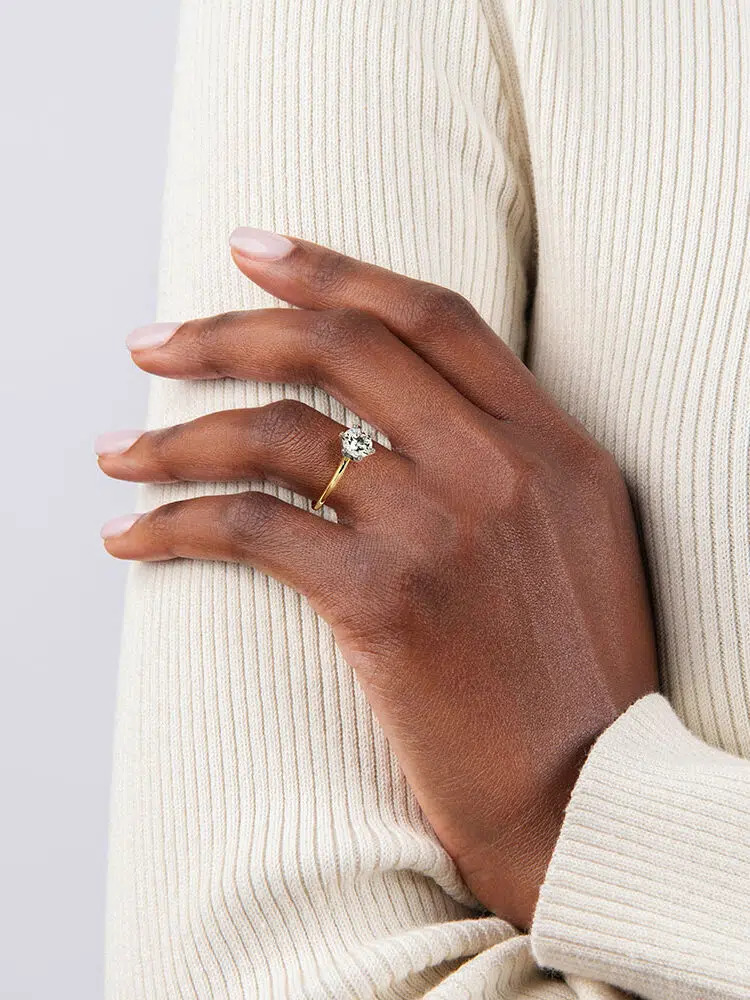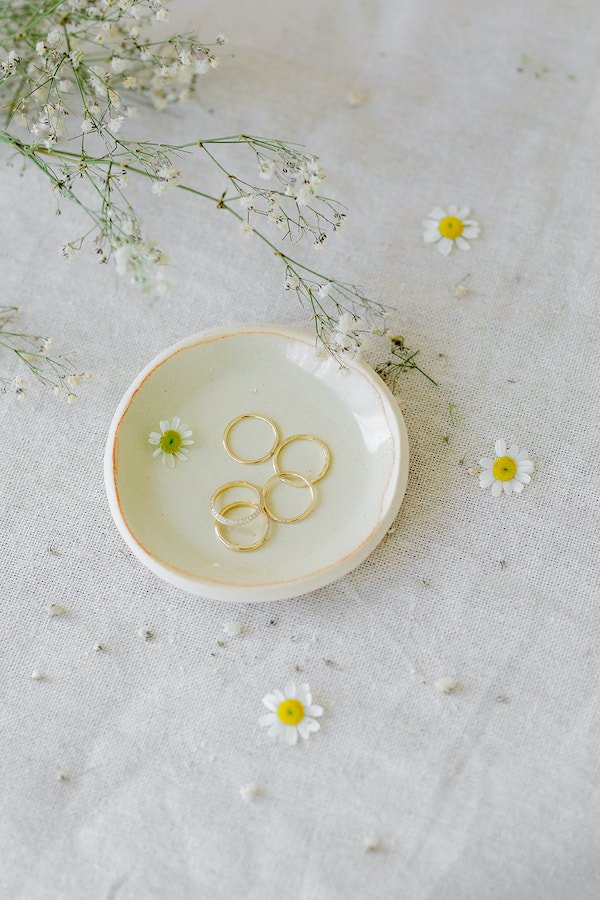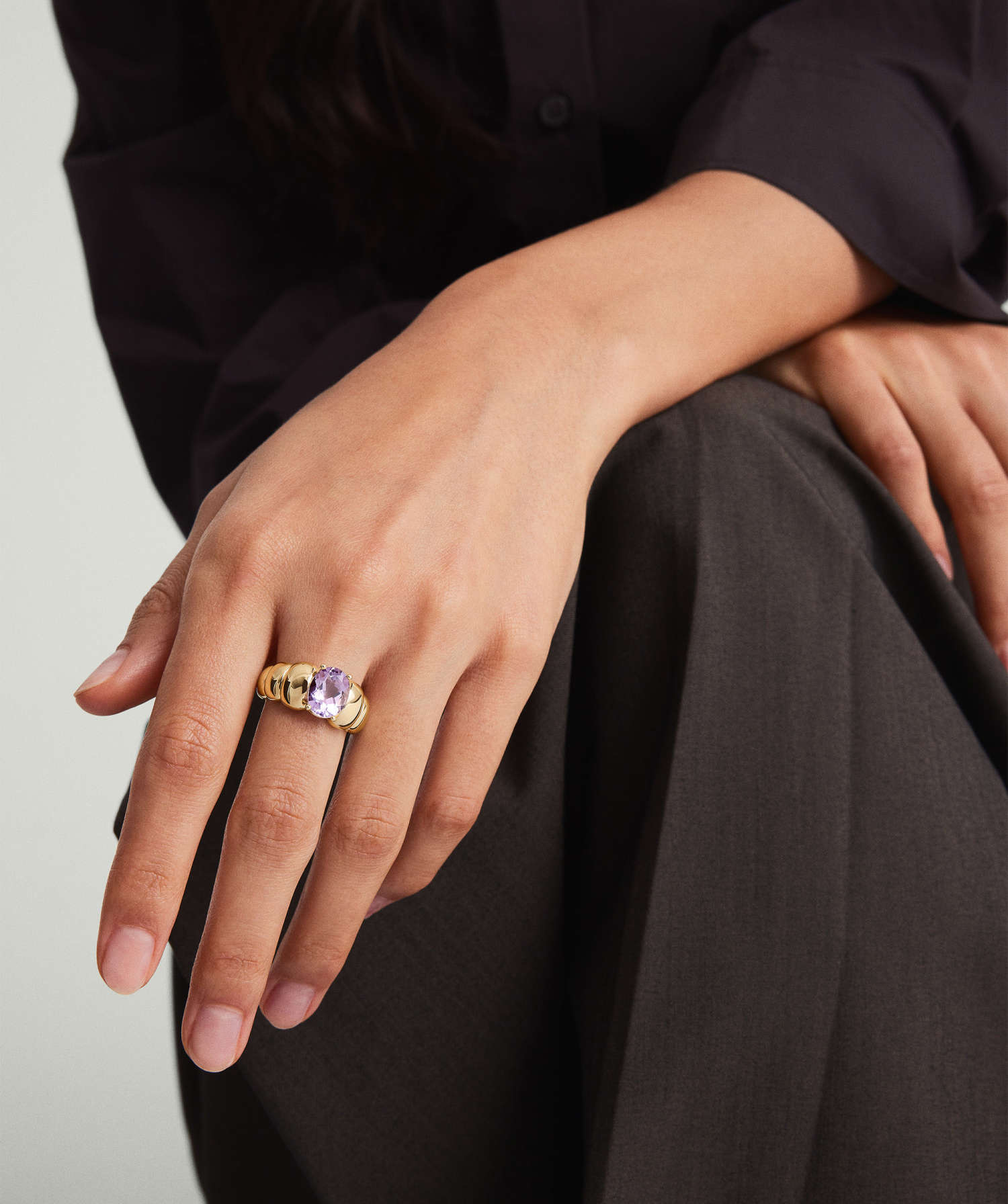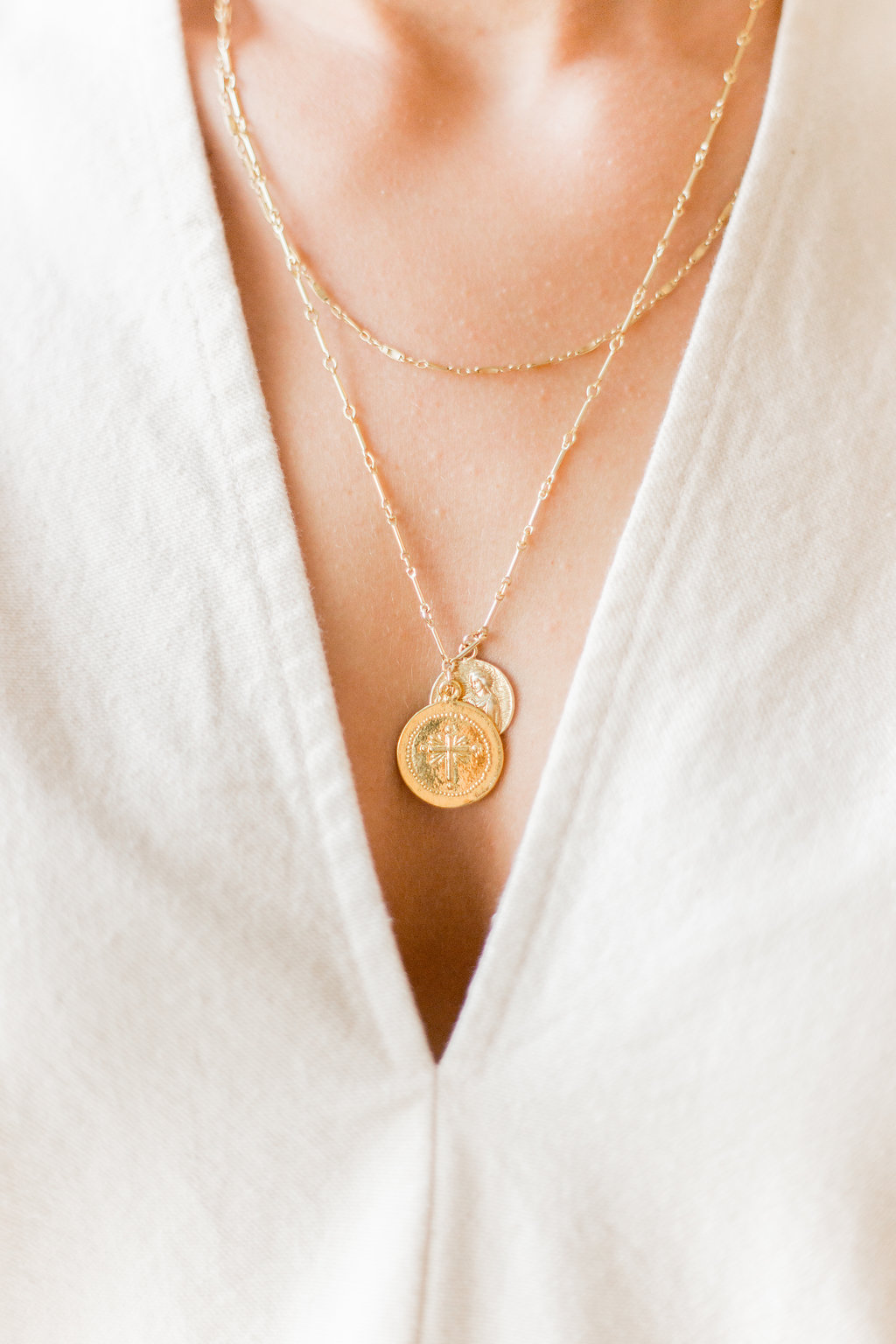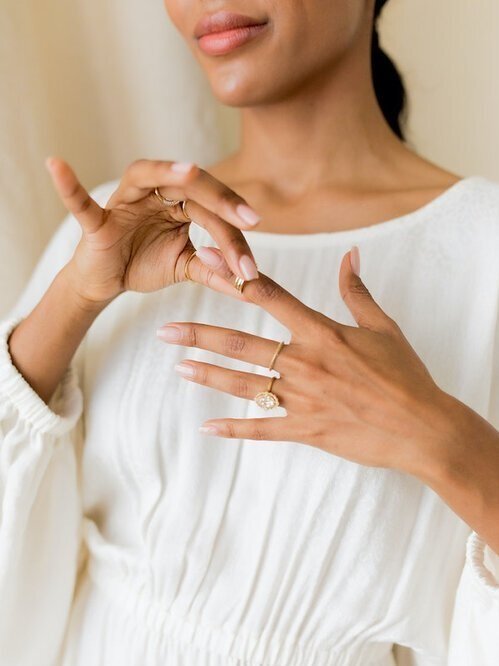
What Are Moissanite Stones, And Are They As Sparkly As Diamonds?
If you haven’t heard of the diamond alternative moissanite just yet, you’re likely not alone. Until recent years, moissanite was almost unheard of in the gemstone world, as it’s extremely rare in its natural form. But more recently, we’ve seen some of our favorite sustainable jewelry brands come out with moissanite collections. And so we just had to find out: What is this beautiful stone, and is it as sparkly as diamonds?
French chemist Henri Moissan first discovered Moissanite in 1893 in a meteor crater in Arizona. What looked like space diamond at first turned out to be a type of silicon carbide. The compound is extremely rare in nature, but in the ‘90s, a North Carolina jewelry manufacturer discovered how to produce moissanite in a lab. Since then, it’s been a popular diamond alternative, especially in engagement rings. Its market valuation has grown year after year too, and in 2021, the moissanite market was valued at around $37 million.
“To the untrained eye, moissanite looks just like diamond.”
To the untrained eye, moissanite looks just like diamond. It ranks at 9.25 on the Mohs scale of hardness, making it the second hardest gemstone on Earth after the diamond, which ranks at 10. If you know what you’re looking for, however, the main visual difference between moissanite and diamond is that moissanite actually sparkles more — but in a different way.
“Moissanite will refract light more brilliantly, which can result in more saturated sparkles,” says Hayley Faw, founder and designer of Apse. The Washington-based handmade jewelry studio uses Moissanite in its Signet Nova Ring collection. Under direct light, moissanite appears brighter and a bit more colorful, giving some moissanite stones the “disco ball effect.”
“Depending on the color and clarity of the stones, even we have a difficult time discerning which is which on occasion.
-Liz Weaver, head of customer service at Gema&Co.
“Moissanite has a higher refractive index than diamond, which results in even greater fire and scintillation,” adds Kristin Coffin, founder of Kristin Coffin Jewelry. Moissanite has more of a rainbow-like appearance and throws light further than diamond. Both diamonds and moissanite stones vary in color and clarity, ranging from colorless to faintly yellow.
That said, most non-professionals can’t tell the difference between a moissanite stone and a diamond. “Depending on the color and clarity of the stones, even we have a difficult time discerning which is which on occasion,” says Liz Weaver, head of customer service at Gema&Co.
Coffin also notes that, while it’s more durable than other gemstones and ideal for everyday wear, moissanite is still not as durable as a diamond. (After all, “a diamond is forever,” as they say!) It also requires a bit more frequent cleaning than a diamond so that it doesn’t appear cloudy.
“Although it isn’t a perfect dupe for a diamond, it is the best on the market.”
-Kristin Coffin, founder of Kristin Coffin Jewelry
“Although it isn’t a perfect dupe for a diamond, it is the best on the market,” says Coffin, who carries a wide range of moissanite engagement rings in her collection.
While the exact amount varies from jeweler to jeweler, on average, a moissanite stone costs about a tenth of the price of a diamond of the same size. A one-carat mined diamond costs about $5,500. The same quality lab-grown diamond will run a little under $2,000, while a moissanite of the same size and quality will cost around $500.
“On average, a moissanite stone costs about a tenth of the price of a diamond of the same size.”
Moissanite stones are so much cheaper for a few reasons. The process to make moissanite in a lab, explains Weaver, produces multiple raw crystals per cycle, while the standard process to lab-create diamonds only yields one stone per cycle. This partly accounts for the higher price point.
The other biggest factor for the price discrepancy between moissanite and diamonds is demand. Diamonds experience “far greater demand,” says Weaver, as they’re still the traditionally popular choice for engagement rings and other romantic gifts. In the 1930s and ‘40s, diamond giant De Beers launched their wildly successful campaign, “A Diamond is Forever,” driving demand (and prices) for diamonds sky high. “There isn’t nearly the same pressure on the moissanite market, or years of industry behind it, so it’s valued at much less currently,” says Faw.
“From a chemical composition standpoint, diamonds are considered superior.”
Keep in mind, too, that from a chemical composition standpoint, diamonds are considered superior — they’re the most durable gemstone, and they’re made of pure carbon (whereas moissanite is made of silica and carbon).
So what’s the bottom line? Well, both lab-grown diamonds and moissanite stones are coveted for different reasons. Lab-grown diamonds are loved for their durability, their brilliance, their lower carbon footprint compared to mined diamonds, and their traditional use in meaningful jewelry to mark milestones. Moissanite, on the other hand, is becoming more and more popular for its dazzling fire and scintillation, its resemblance to diamond, and, above all, its affordability.
“The choice between diamond and moissanite is a completely personal decision — there’s no right or wrong.”
“I would ever so slightly lean towards moissanite simply for the difference in pricing,” says Weaver, describing her personal preferences, “since the stone performs so similarly to lab diamond in every other aspect.”
Weaver, however, also emphasizes that the choice between diamond and moissanite is a completely personal decision — there’s no right or wrong. “At the end of the day, we always recommend selecting whatever will make you most happy,” she says, while remaining financially responsible. “Never break the bank or stretch for a stone, as that’s all it is at the end of the day.”
Natalie Gale is a Boston-based freelance journalist. When she’s not writing about art, food, or sustainability, you can find her biking to the farmers’ market, baking, sewing, or planning her next Halloween costume. Say hi on Instagram!

